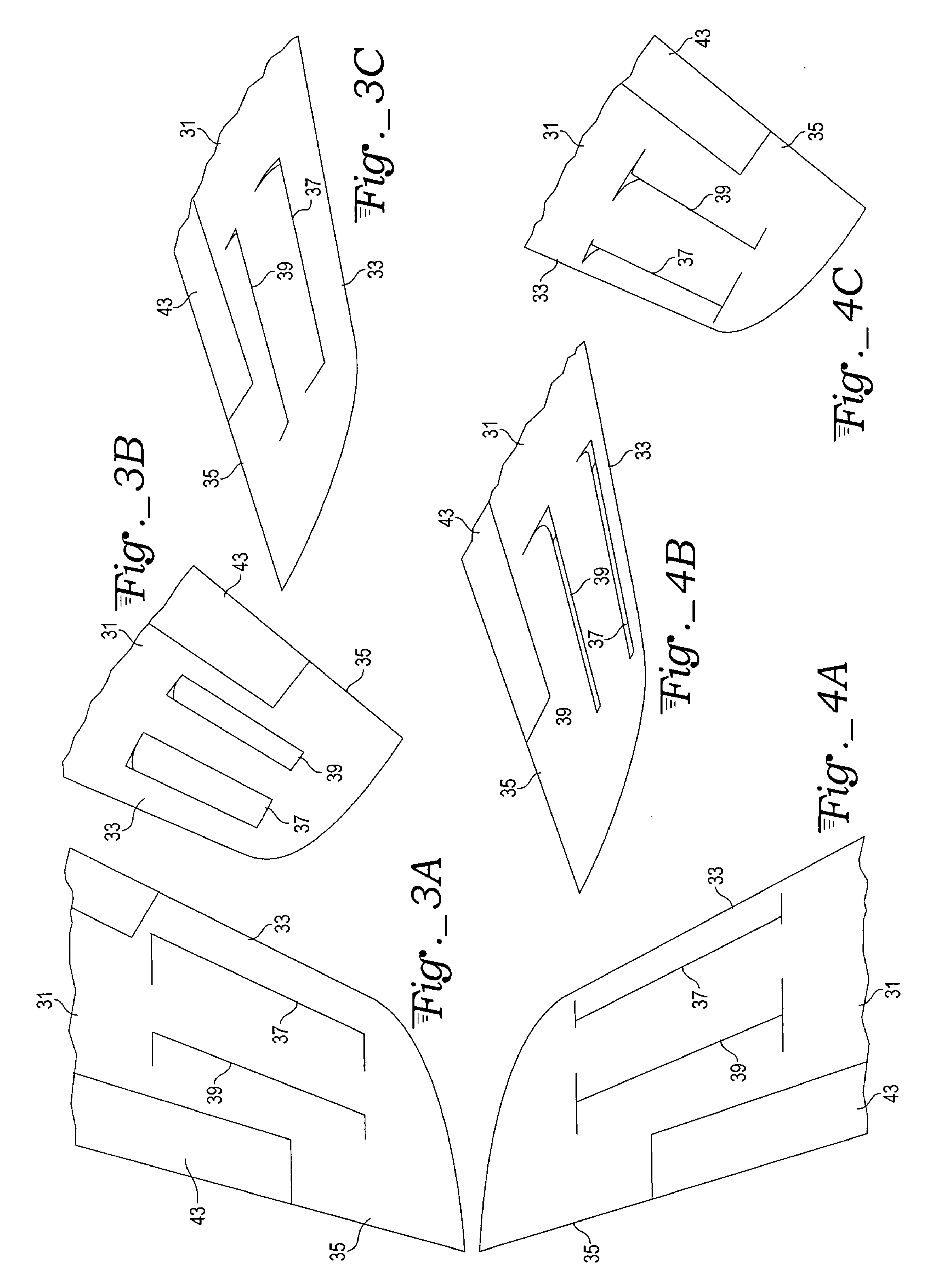Fluid dynamic body having escapelet openings for reducing induced and interference drag, and energizing stagnant flow
a fluid dynamic body and escapelet technology, applied in the direction of foil movement reduction, airflow influencer, air cooling, etc., can solve the problems of wingtip vortices, and essentially unavoidable consequences, so as to reduce trailing vortices and wake turbulence, improve energy efficiency, and reduce drag
- Summary
- Abstract
- Description
- Claims
- Application Information
AI Technical Summary
Benefits of technology
Problems solved by technology
Method used
Image
Examples
Embodiment Construction
[0033]In order to better understand the improvements, we note first that slots, slats and slotted flaps have the purpose of increasing the maximum lift coefficient, thereby reducing the stall speed, while the escapelets provided within the various fluid dynamic bodies in accord with the present invention have instead the purpose of preemptively redirecting fluid flow energy before it can cause undesirable results such as vortices, wake turbulence, and drag with consequent wasteful energy dissipation. The escapelets harness, redirect and release the energy beneficially so as to minimize such energy losses. In addition to the benefits already discussed, escapelets may also be employed to reduce turbulence due to flow separation, thus making the associated flows more efficient.
[0034]“slot” (noun)—a long and narrow opening as between a wing and a Fowler flap; specif. a long and narrow spanwise passage in a wing usually near the leading edge for improving flow conditions at high angles o...
PUM
 Login to View More
Login to View More Abstract
Description
Claims
Application Information
 Login to View More
Login to View More - R&D
- Intellectual Property
- Life Sciences
- Materials
- Tech Scout
- Unparalleled Data Quality
- Higher Quality Content
- 60% Fewer Hallucinations
Browse by: Latest US Patents, China's latest patents, Technical Efficacy Thesaurus, Application Domain, Technology Topic, Popular Technical Reports.
© 2025 PatSnap. All rights reserved.Legal|Privacy policy|Modern Slavery Act Transparency Statement|Sitemap|About US| Contact US: help@patsnap.com



